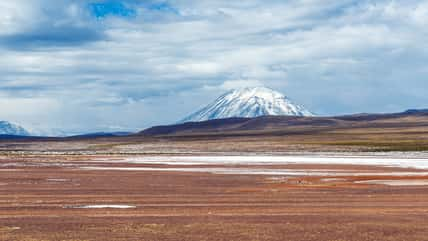A Secret Abandoned City Underneath Greenland’s Ice Has Been Uncovered By NASA

A team of engineers and scientists flew a jet above northern Greenland back in April to test a radar instrument. When they were about 150 miles east of Pituffik Space Base, the radar detected something unexpected underneath the ice. They discovered that it was an abandoned site of a secret project during the Cold War.
The site is known as Camp Century, or the “city under the ice.” It was a military base built into the Greenland ice sheet in 1959 by the U.S. Army Corps of Engineers.
At the time, it was closer to the surface, but after years of snow and ice buildup, it is now buried at least 100 feet deep.
“We were looking for the bed of ice and out pops Camp Century,” said Alex Gardner, a scientist at NASA’s Jet Propulsion Laboratory. “We didn’t know what it was at first.”
Back then, Camp Century was advertised as a U.S. polar research site. The scientists there did collect the world’s first ice core samples, leading to groundbreaking research that is still vital today, but the facilities also held a shadowy secret: a Cold War initiative called Project Iceworm.
The classified mission aimed to establish a network of nuclear missiles within a series of tunnels beneath the ice. The weapons were capable of launching through the thick ice sheet. Their potential target was the Soviet Union.
The site was located 800 miles from the North Pole and was built in collaboration with the Danish government. Greenland is part of the Kingdom of Denmark.
However, the U.S. army did not share the true nature of Project Iceworm with the Danish government right away.
Camp Century is in a remote area where temperatures can get as low as -70 degrees Fahrenheit, and wind speeds can reach 120 miles per hour or more.

Sign up for Chip Chick’s newsletter and get stories like this delivered to your inbox.
The facility is among the first to generate its power from a portable nuclear reactor, which was removed in 1967.
That was when the camp and Project Iceworm were ultimately abandoned due to the challenges of maintaining the structure within Greenland’s shifting ice sheet.
Tons of hazardous waste were left behind as well, including 63,000 gallons of wastewater, 53,000 gallons of diesel fuel, and an unknown amount of low-level radioactive coolant from the reactor. According to a 2016 study, the site might also contain toxic pollutants like polychlorinated biphenyls.
Scientists are worried that rising global temperatures will melt the ice over Camp Century, revealing the waste and contaminating the area.
Previous airborne surveys have detected Camp Century, but those radars did not provide very detailed maps. The observation made in April, using NASA’s Uninhabited Aerial Vehicle Synthetic Aperture Radar (UAVSAR), produced a map with more dimension, allowing individual structures to be seen in ways they haven’t before.
Overall, the results appear to line up with historical records of the site. In the future, the UAVSAR will be used to measure the thickness of the ice sheet in Antarctica and estimate how much sea levels will rise.
More About:News





